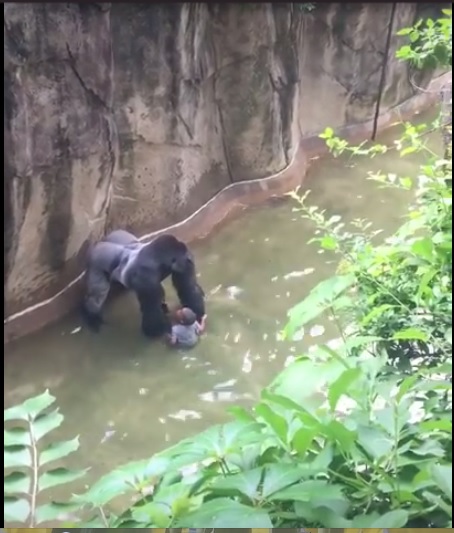http://youtu.be/UXXSyPFZXwA
(Video of Bandit and Bailey; I’m not really that fat … it’s an apron filled with treats … honest …)
Those of you who have been following along with the dog adventures at my house – Scout’s illness last year and his death in January along with the very serious behavior problems we’ve been dealing with between Bandit and Bailey, problems that for their own safety have prevented the two dogs from occupying the same rooms since last November – will rejoice with us when you see this video. (I think Bandit has been doing a great job keeping everyone updated.)
Look! Bandit and Bailey are together! In the yard! With food! And no bloodshed!
When Bailey entered what I affectionately refer to as her “maniac, pain in the tail, wild animal” phase last summer, we wrote most of it off as normal adolescent puppy behavior. Unfortunately, there was also a reactivity problem that likely resulted from being taken from her mother at six weeks.
Add in Scout’s illness, Bandit’s possessivness, and an extremely high emotional stress level in our house, and it was like a bomb went off. Dog fights that sent Bandit to the vet with puncture wounds. Stitches for darling husband when he tried to break up a dog fight. Serious bruises on poor Scout. More stress, more problems. It was a vicious cycle.
The end of 2011 and beginning of 2012 was spent simply managing the situation, keeping Bailey separated from Bandit and Scout (and the cat), trying to keep Scout as comfortable as possible. But when he died in January, I realized that I had to take control of the situation, regardless of my own emotional state or how much help I was or wasn’t going to get.
Yes, I had the support of trainers, and am so grateful for the classes we took and what I learned. But money was tight and there was a limit to how much professional help I could get. So I turned to the reading and research I’d done over the last few years about dog behavior (I thought at one time I wanted to be a dog trainer; not so much any more) and made frequent calls or sent emails to my training friends with questions.
I made a plan: work on Bailey’s basic training and manners; encourage Bandit to have positive interactions with Bailey to work on his fears; teach my husband how to read the dogs’ signals to avoid increasing their stress levels and undoing the training we’d been working so hard on. (I don’t say that to criticize; I think that in most dog households one family member handles the bulk of the animal care and the partner just isn’t always on the same page. And this was especially true in our house, where dog behavior and training is a subject I’m deeply interested in.)
And so, months later, here’s where we are. It’s such a relief to see our hard work pay off. And not only do the dogs get along better, darling husband and I have learned a little about communication, too. (I’m not sure which was the bigger accomplishment, to be honest.)
I think in our society, we like things quick and easy. Shock dogs into obedience. Send them to boot camp and pick the up with “problems fixed”. Give them a pill to calm them down. But those are not the answers. True change takes time and effort. While the last six months have been difficult and stressful, they’ve also been a blessing. These are not dogs who simply learned tricks. These are dogs who have changed the way they interact with the world and each other because they’ve changed the way they view the world and each other.
And the humans have learned some lessons, too.
If you’re dealing with problem dog behavior, I urge you – no, I beg you – to find a trainer in your area who can work with you to modify your dog’s behavior – and yours – using positive methods. Don’t be fooled by the word “positive” in a business name. You want a trainer well-versed in dog behavior who is committed to using conditioning methods that will reward desired behavior, not punish negative behavior. It’s a fine line, but a very, very important one.
It’s a slow process and the changes are in small increments, but the process is as important as the end result – for you and your dog.











